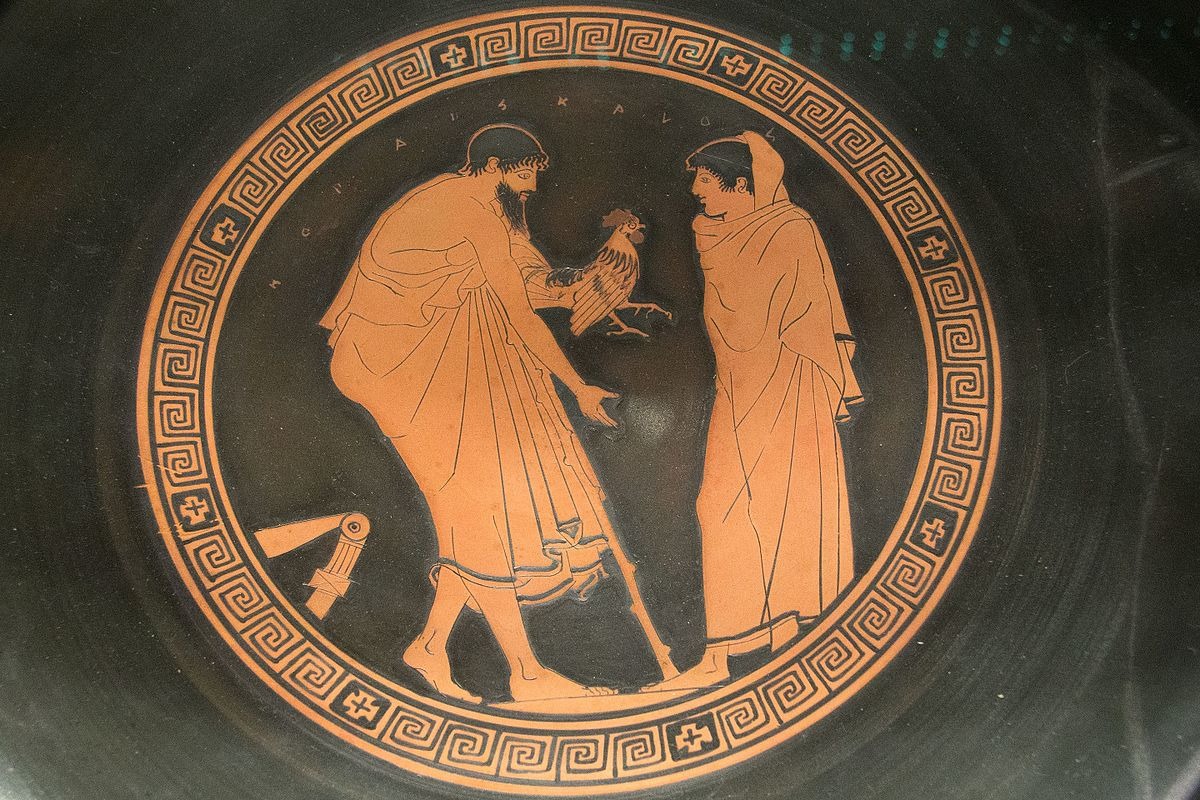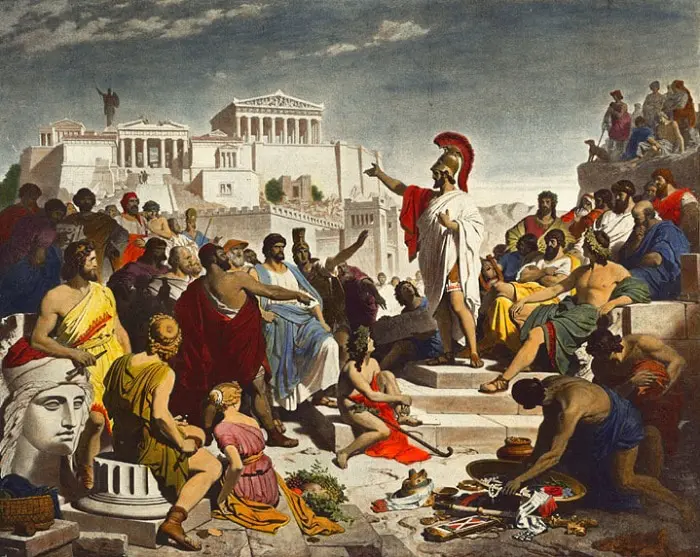
The division of people into various social classes is a persistent feature across civilizations and was no less the case in ancient Greece where social class was determined by several factors such as birth, wealth, occupation, and citizenship.
Ancient Greek society was not as rigidly stratified as some other ancient civilizations, but there were distinct social divisions that played a role in determining a person’s status and privileges.
Naturally, social class divisions varied significantly over the course of ancient Greek history and between the city-states and kingdoms of Greece. To make the topic more digestible, we will examine two case studies from Athens and Sparta.
Social class in ancient Greece
Although the societies of ancient Greek polities could vary considerably, there were certain commonalities between them. Political life was dominated by men who held the right to vote and own land.
Adult male citizens in ancient Greece were generally divided into three or four main classes, each with their own sets of rights and responsibilities.
Women, although associated with the male groups, lacked citizen rights. Children were generally categorized as under 18 years of age. Slaves, known as douloi, fulfilled civil or military responsibilities. Foreigners, both non-residents (xenoi) and foreign residents (metoikoi), held a lower status than male citizens in the social hierarchy.

Athens
In Athens, after Solon’s reforms in the 6th century BC, people were generally assorted into four main social classes: the pentacosiomedimnoi, the hippeis, the zeugitae, and the thetes. At the bottom were slaves who had the fewest rights.
Pentacosiomedimnoi: This was the highest class of citizens, consisting of individuals whose property or estate could produce 500 medimnoi of wet or dry goods (or their equivalent) per year. Members of this class were eligible for all top positions of government in Athens, including the positions of nine archons and treasurers, membership in the Council of Areopagus (as ex-archons), the Council of 500, and participation in the Ecclesia (the Athenian assembly). They could also serve as generals (strategoi) in the Athenian army.
Hippeis: The hippeus class was the second highest social class. Its members were required to have at least 300 medimnoi or the equivalent as yearly income. While they held a lower status than the pentacosiomedimnoi, they were still of considerable influence and privilege. Hippeis also doubled as a term for cavalry in many ancient Greek polities.
Zeugitae: The zeugitae were individuals whose property or estate could produce 200 medimnoi of wet or dry goods (or their equivalent) per year. They were often associated with the ownership of a yoke of oxen or the ability to equip themselves as hoplites (heavily armed infantry soldiers). Members of this class could serve as hoplites in the Athenian army and were granted the right to hold certain minor political offices. Over time, their status rose, and they were eventually allowed to hold the archonship and participate in various government positions and bodies.
Thetes: The lowest social class consisted of the thetes, citizens who worked for wages or had an annual income of less than 200 medimnoi (or their equivalent). They could participate in the Ecclesia and serve as jurors in the law court of the Heliaia. However, thetes were excluded from serving in the Boule (the Council of 500) and holding higher magisterial positions. In later reforms, thetes were empowered to hold public office, marking a shift in their status and political influence.
These social classes were broadly defined based on property ownership and income levels, which in turn determined an individual’s eligibility for certain political offices and positions within Athenian society. Additionally, the specific rights and privileges of these classes could change over time due to reforms and changing political dynamics.

Sparta
Spartan society was organized according to a rigidly hierarchical social system designed to support the military. The Spartans attributed the origin of most of their laws and social organization to the legendary lawgiver Lycurgus, although his historicity is a matter of debate.
Spartiates (Spartan Citizens): The Spartiates were the highest class in Spartan society. These were full citizens who descended from the original Spartan warriors who had successfully completed the agoge, the rigorous training and education system. Spartiates were required to be landowners, as they were expected to provide military service as hoplites. They enjoyed political rights and had the privilege of participating in the decision-making process of the Spartan assembly. Spartiates were the ruling class and held a monopoly on political power.
Perioeci: The perioeci were free inhabitants of Sparta who were not full citizens. They were typically skilled craftsmen, traders, and farmers who lived in the surrounding areas of Sparta but were not allowed to participate in the political affairs of the city. They had some degree of autonomy in their local communities and were responsible for trade and manufacturing activities that supported the Spartan economy. While not citizens, perioeci were obligated to provide military support typically as light infantry, and were subject to Spartan authority.
Helots: Helots were the lowest class in Spartan society and constituted a significant portion of the population. They were essentially serfs who worked the land, providing agricultural produce to the Spartiates. Helots were tied to the land and were owned collectively by the Spartan state. They had limited rights and were subject to the authority of the Spartiates. Helots were also obligated to serve as laborers during times of war and could be used as auxiliaries in the Spartan army. The fear of helot uprisings influenced many aspects of Spartan society, including their military focus and strict social control.
The social structure of Sparta was centered around maintaining a highly disciplined and militaristic society. The Spartiates held a dominant role due to their status as citizen-soldiers, and the roles of perioeci and helots were vital in supporting the Spartan way of life. The unique emphasis on military training and the subjugation of helots contributed to the distinct character of Spartan society in ancient Greece.

See all the latest news from Greece and the world at Greekreporter.com. Contact our newsroom to report an update or send your story, photos and videos. Follow GR on Google News and subscribe here to our daily email!



